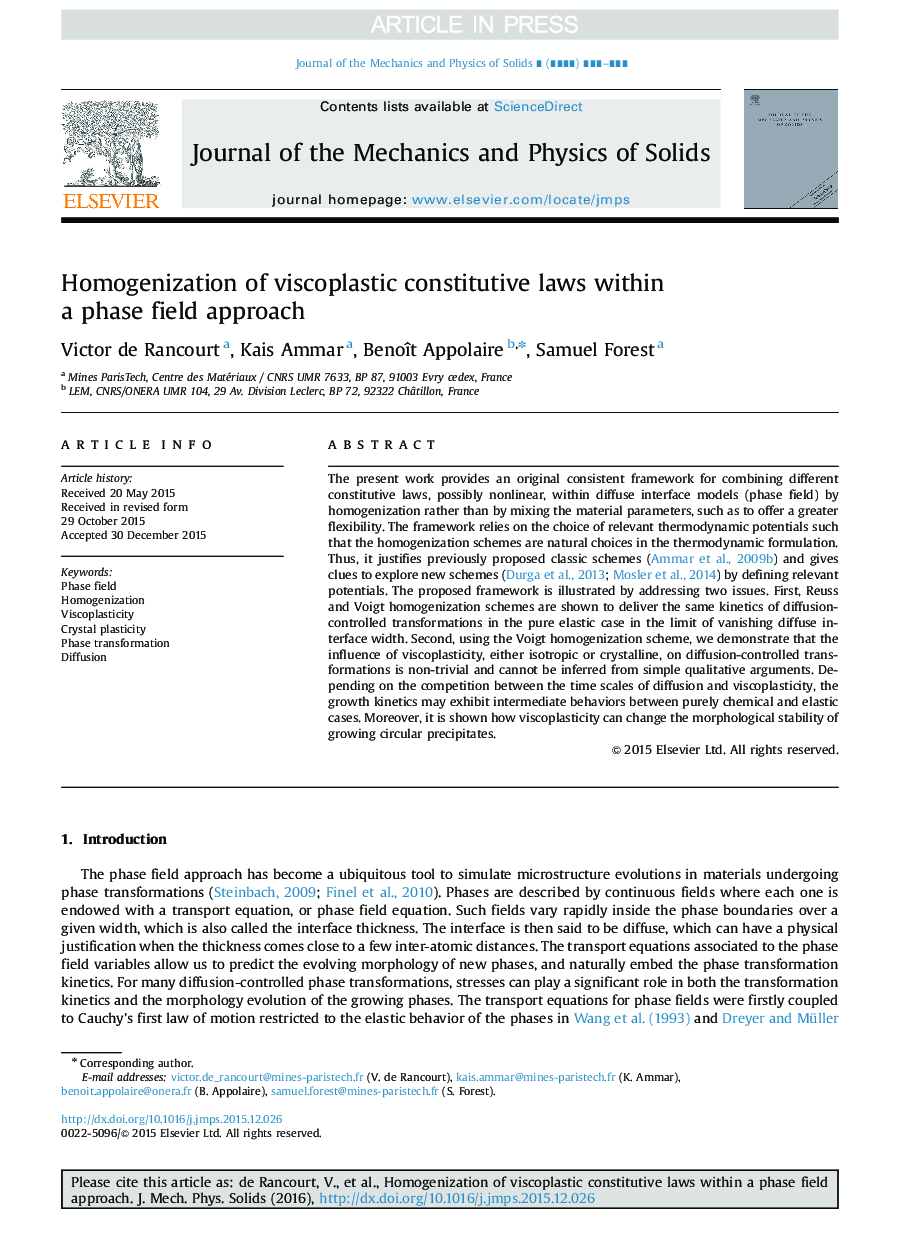| Article ID | Journal | Published Year | Pages | File Type |
|---|---|---|---|---|
| 7177855 | Journal of the Mechanics and Physics of Solids | 2016 | 29 Pages |
Abstract
The present work provides an original consistent framework for combining different constitutive laws, possibly nonlinear, within diffuse interface models (phase field) by homogenization rather than by mixing the material parameters, such as to offer a greater flexibility. The framework relies on the choice of relevant thermodynamic potentials such that the homogenization schemes are natural choices in the thermodynamic formulation. Thus, it justifies previously proposed classic schemes (Ammar et al., 2009b) and gives clues to explore new schemes (Durga et al., 2013, Mosler et al., 2014) by defining relevant potentials. The proposed framework is illustrated by addressing two issues. First, Reuss and Voigt homogenization schemes are shown to deliver the same kinetics of diffusion-controlled transformations in the pure elastic case in the limit of vanishing diffuse interface width. Second, using the Voigt homogenization scheme, we demonstrate that the influence of viscoplasticity, either isotropic or crystalline, on diffusion-controlled transformations is non-trivial and cannot be inferred from simple qualitative arguments. Depending on the competition between the time scales of diffusion and viscoplasticity, the growth kinetics may exhibit intermediate behaviors between purely chemical and elastic cases. Moreover, it is shown how viscoplasticity can change the morphological stability of growing circular precipitates.
Related Topics
Physical Sciences and Engineering
Engineering
Mechanical Engineering
Authors
Victor de Rancourt, Kais Ammar, Benoît Appolaire, Samuel Forest,
